
Tiger Travels Destination Guide: Paris, France
In PAW’s first city guide in a new series, Princetonians lend their expertise on visiting the City of Light
Paris is a good idea in any season. Spring is the stuff of song and legend, when the cherry blossoms awaken and strolls along the Seine resume. Over New Year’s, the sparkling Champs-Élysées competes with the night sky itself. Even deceptively chilly, damp November is the perfect time to test out that new wool trench and oversized knit scarf to dine outside like a Parisian. As is true for the world’s great cities, Paris is one to come back to, again and again, whether there’s a global event (ahem, the Summer Olympics) or a food craving you just can’t shake. For our debut Tiger Travels Destination Guide, we consulted alumni across disciplines — visual arts, history, literature, design, travel — to form these expert recommendations to seeing the City of Light. We hope it inspires your next trip, whatever the season.
If you do happen to be in France for the Olympics, well done you! Twenty-five current and former Princeton students are competing at the Summer Games, which run through Aug. 11. That’s more athletes than Angola, Estonia, Guatemala, and Iraq sent to Paris. PAW has you covered throughout the event.
By Laura Dannen Redman ’03, contributing editor. With Elizabeth Bailey ’03, Cara Marsh Sheffler ’04, and Jennifer Scott ’09.
What’s Happening in 2024 (aside from the Olympics)
Notre-Dame de Paris is set to fully reopen Dec. 8, five years after a fire collapsed much of its roof and iconic spire. Celebrations will begin 15 days prior with a procession through the streets to return to the cathedral the Virgin and Child, a sculptural masterpiece from the 14th century, and will last well into June 2025. Princeton Connection: With portable laser scanners, the late Andrew Tallon ’91, a pioneering professor of art and architectural history at Vassar, created a 3D rendering of the cathedral that ended up being the most accurate model of the building pre-fire. His Friends of Notre-Dame de Paris foundation also raised money to repair his beloved cathedral.
The first Sunday of every month is a Car-Free Day in Paris, which means the entire length of the Avenue des Champs-Élysées is turned over to pedestrians, as well as much of the city center in the 1st, 2nd, 3rd, and 4th arrondissements.
Want to sound like a local? Have an opinion on flying taxis — two-seat, 18-rotor electric helicopters made by German company Volocopter — that have been approved by the French government. A “vertiport” platform was placed on the Seine for takeoffs and landings, but the city of Paris is seeking legal action to keep taxis grounded, according to Le Monde.
— L.D.R.
An Art Lover’s Guide to Paris’ Lesser-Known Museums
The Louvre has a playful slogan: Retrouvez le sourire (“Find the smile again”), referring to the beguiling expression of the museum’s most famous holding, Mona Lisa. Unfortunately, roughly 10 million visitors per year take this directive. While we would never advise skipping Paris’ icons — among them Centre Pompidou, the Musée Picasso, or the Musée d’Orsay — there’s never a bad time to explore some lesser-known sites.
Each of France’s two greatest fashion fortunes have funded an incredible art museum: the Fondation Louis Vuitton on the leafy outskirts of Paris is hosting Henri Matisse and Ellsworth Kelly retrospectives through Sept. 9. The Pinault Collection at the Bourse de Commerce has a group show focusing on art from the 1980s to the present that concerns how we process current events. Artists featured run the gamut from the Swiss artist duo Peter Fischli and David Weiss to Cindy Sherman; the show is on until Sept. 2.
On the Left Bank, the Musée Rodin occupies a stunning hôtel particulier with a sculpture garden that makes for relaxed viewing of the artist’s sensuous The Kiss and monumental The Gates of Hell. On the Right Bank, the Musée de l’Orangerie, home to Claude Monet’s Water Lilies cycle, overlooks the Seine. Explore the history of Montparnasse at the Musée Bourdelle, situated in the preserved 19th-century studios of sculptor Antoine Bourdelle, or pass the afternoon in the hidden gardens of the Musée Delacroix, Eugène Delacroix’s former apartment and studio, now transformed into a museum. Finally, unwind with a cocktail at Le Gainsbarre in the Maison Gainsbourg, a museum dedicated to the memory of Paris’s favorite — and most louche — singer. — C.M.S.
Know before you go: The Paris Museum Pass is one of the best deals in town. Many alumni recommend the two-, four-, or six-day pass for easy access to 50+ museums and monuments around the Paris region, even Versailles. Kids under 18 get into museums for free, so just buy for the adults and let your inner culture vulture guide you.
— L.D.R.
The 5 Artworks I Never Miss at the Louvre (and how to see them without the crowds)
- Paolo Veronese’s The Wedding Feast at Cana. While everyone else in the room is looking at the Mona Lisa (which I personally find overrated), simply turn around and admire Veronese’s amazing work taken from the refectory of the San Giorgio Monastery in Venice. Try to find the dog peeking out from the balustrade!
- Domenico Ghirlandaio’s An Old Man and his Grandson. A realistic and emotionally poignant portrait in the Grand Galerie that captures their bond. There are also several paintings by Leonardo da Vinci in the Galerie that are much more interesting and less crowded than the Mona Lisa (Madonna of the Rocks, The Virgin and Child with St Anne).
- The Cour Khorsabad / Palace of Sargon II. The Louvre’s collection of antiquities from the ancient Near East is amazing. These galleries are often very quiet and contain beautiful sculptural decorations from the 8th century B.C.
- Vermeer’s The Astronomer and Albrecht Dürer’s Self-Portrait. While the Louvre has an amazing collection of Italian Renaissance art, the Northern European galleries are not to be overlooked and contain many masterpieces in a much quieter environment.
Know before you go: The Louvre is open until 9 p.m. on Wednesdays and Fridays, an ideal antidote to jet-lag and a more relaxed time to visit the museum. I.M. Pei’s Louvre Pyramid seems to glow from within at night, making the experience feel that much more special.
— J.S.
Tours for Tigers of All Stripes
The New Paris Tour: American journalist turned Parisienne Lindsey Tramuta is a local authority in all things food/coffee/wine, and now leads excellent small-group tours inspired by her bestselling book, The New Paris. For up to six people; tastings included. lindseytramuta.com/tour-with-me
Women of Paris: Heidi Evans creates community with her Paris walking tours devoted to women’s history and influence. Make new friends while learning about influential female writers, scientists, haute couture icons, and more. Direct message on Instagram (@womenofparis) for details.
Ricki Stevenson’s Black Paris Tours: These personal, accessible walking and bus tours celebrate the past and present of Africans, West Indian-Caribbeans, and African Americans in Paris. See where Josephine Baker lived in the 1920s, discover Montmartre’s past as the Harlem of Paris, and grab lunch in Little Africa. blackparistour.com
Private Tours with Context Travel: Architects, Ph.D.s, docents, and all-around Paris gurus lead Context Travel tours and they are always top notch. Pick your passion — the French Revolution, Jewish Paris, Normandy, art, architecture — and there’s a guide waiting to answer all your questions. The tours for kids are particularly great, turning an education into a scavenger hunt. contexttravel.com
— L.D.R.
Tasting Menu
Part-time Parisians and full-time food lovers recommend classic bistros, wine bars, and restaurants they can’t get enough of (and what to order). — L.D.R.
L’Atelier Maître Albert by Guy Savoy for the roast chicken. The specialty is the spit-roasted free-range chicken, which can be enjoyed fireside in a salon of a 15th-century house. Reservations recommended.
Au Passage for the wine list and tartare. A fun and unfussy one-room wine bar down an alley in the 11th arrondissement serves up natural wine, well-executed small plates, and service that leaves you with a smile.
Benoit for the escargots. Open since 1912, Benoit is what AI would imagine a Paris restaurant to be: white tablecloth, perfectly plated dishes that are richly seasoned and sauced. Eat and drink like kings, they ask — hard not to oblige. Reservations recommended.
Le Bistrot Paul Bert for steak-frites and fried eggs. Universally beloved, Paul Bert is a homey, contemporary riff on a Paris bistro with a steak-frites sauce you might want to drink (made of cognac and peppercorn) and an equally great oyster annex, L’Ecailler du Bistrot. Reservations recommended.
Cinq-Mars for the chocolate mousse. This petite, low-lit restaurant in the 7th is ideal for tucking into stews, curries, housemade terrine, and a chocolate mousse that’s dreamy. Reservations recommended.
Le Comptoir du Relais for its lunch and cheese board. Before there was Bistrot Paul Bert, there was Le Comptoir du Relais, the laid-back, no-reservations creation of “bistronomy” pioneer Yves Camdeborde at the four-star hotel Le Relais Saint Germain. Hotel guests get a reservation; everyone else gets in the queue. Best to come for lunch (or wait next door with a glass of bubbly and oysters at L’Avant Comptoir de la Mer) and be rewarded with the freshest ingredients around and the fromage du jour. Many alumni named this their favorite restaurant in Paris.
Les Enfants du Marché for the natural wine and Breton oysters. Set within the historic Marché des Enfants Rouges (c. 1615), this little wine bar with only about 12 counter seats offers a romantic respite with organic ciders, wines, and elevated dishes.
Le Relais de Venise L’Entrecôte for (more!) steak-frites and walnut salad. Yes, it’s those steak-frites: L’Entrecôte is known for making one meal really well (there’s now an outpost in NYC with a line out the door) for a reasonable price. The dish is a single cut of meat (“steak”) done blue, rare, medium, or well, with a signature butter-herb-semi-secret sauce and a side walnut salad. No reservations.
Actual tasting menus…
L’Atelier de Joël Robuchon: “Chef of the Century” Joël Robuchon’s open kitchen in Saint-Germain-des-Prés was recommended by none other than former Princeton president Shirley Tilghman herself!
Ambos: Chef-spouses Cristina Chomet Tejeda (formerly of the queen of England’s kitchen) and Pierre Chomet (a Top Chef alum) serve dynamic “borderless cuisine” reflecting their home and travels, from Spain to South America to Bangkok to Paris.
For dessert…
Berthillon on Île Saint-Louis for the “best ice cream in Paris,” says Courtney Coleman Everson ’03, who just spent several weeks on sabbatical in the city with her family.
Bonus! Where the locals eat when they want a bistro break: Vins des Pyrénées (Paris bistro with contemporary touch), Stéréo (hip wine bar, serves vegetables!), Maggie Rooftop (360-degree city views, April to October), Au Coin des Gourmets (Vietnamese and Cambodian near Tuileries Garden), Perruche (rooftop garden with Mediterranean vibe), Le Loir dans la Théière (tea house tres charmant).
—L.D.R
A Perfect Afternoon on Canal Saint-Martin
Start with a late lunch and spritzes at the restaurant La Marine in Canal Saint-Martin. Given the name, it’s not surprising that the seafood is excellent — and the scene isn’t touristy at all. Enjoy a post-meal stroll along the canal, a picturesque offshoot of the Seine, over footbridges and through parks; there’s always something going on in this neighborhood. In 30 minutes, you could walk all the way to a large artificial lake in Paris called Bassin de la Villette; pack a bathing suit for a swim. At night, check out whatever’s on at Bataclan, the concert hall that was the site of the Paris terror attacks in 2015 but has come back in a big way.
— L.D.R.
Secrets of an Icon
Did you know… that the original Shakespeare and Company bookstore was started by a former Princeton resident? Sylvia Beach (1887 – 1962) lived in Princeton in the early 1900s, when her father was minister at First Presbyterian Church. In 1919, she opened an English-language bookshop and lending library on the Left Bank in Paris. “She called it Shakespeare and Company, and it quickly became the center of expatriate life in the city,” reports the Princeton University–run Shakespeare and Company Project. “In 1922, she published James Joyce’s Ulysses under the Shakespeare and Company imprint, making the bookshop and lending library famous around the world. In 1941, she closed the bookshop and lending library during the German occupation of France.” Visit the reincarnated shop today, where it is run by Sylvia Whitman — named by her father and former shop owner, George, in tribute to Beach, as he would say. shakespeareandcompany.com
Did you know… that there’s a hidden apartment at the top of the Eiffel Tower (and it’s occasionally bookable on Airbnb)? Eiffel Tower engineer Gustave Eiffel kept a pied à terre just below the tower’s spire, with a living room — think paisley wallpaper, a couch, several desks, a piano — and kitchen, bathroom with a sink, and separate toilet (but no bed). The steel-beamed hideaway was meant for work or entertaining the likes of Thomas Edison, who is a “featured” guest (in wax) on public tours of the space.
Did you know… that macarons might actually be Italian? Quelle horreur! One historical tale suggests that Italian noblewoman Catherine de' Medici arrived in France to marry King Henry II, and brought along her pastry chefs armed with her favorite dessert: a petite round almond cake then called “maccherone.” (Though it’s also said that macarons might have originated in the Middle East… or in a convent near Cormery.) By the 19th century, Parisian pastry chefs added the now-key ingredient — a ganache filling — and in the early 1900s, Ladurée perfected what we know as the modern French macaron. Try it at Ladurée and Pierre Herme and compare notes.
— L.D.R.
My Favorite Neighborhood: Saint-Germain-des-Prés
Elizabeth “Lizzie” Bailey ’03 is an interior designer and co-founder of Story Street Studio who returns to Paris time and again — and nearly always to Saint-Germain-des-Prés in the 6th arrondissement. Long a bohemian enclave on the Left Bank, where the Lost Generation would hold court at Les Deux Magots and Café de Flore (immortalized in Hemingway’s A Moveable Feast), Saint-Germain remains a draw for creative types. It feels lived in — more of a village than a tourist destination — where locals enjoy a glass of wine (or two) outside the supermarché after work. Art galleries, boutiques, bistros, and bakeries line cobblestone streets — these are just a few of Bailey’s favorites.
Josephine Chez Dumonet: “This is my new go-to bistro (117 Rue du Cherche-Midi), more off the beaten path than Les Deux Magots and with nary an American in sight. The souffle is to die for.”
Vanessa Bruno: “She’s a clothing designer but arguably more famous for her bags: beautiful suede and leather totes, quilted crossbody bags, and crocheted beach carry-alls. They renovated the Paris flagship store at 25 Rue Saint-Sulpice this year to look and feel like a chic Paris apartment.”
Poilâne Bakery at 8 Rue du Cherche-Midi for its “famous sourdough bread, stamped with a big P, to take home. Or the apple tart. Or anything, really. Also beloved by the Barefoot Contessa and food writer Dorie Greenspan.”
La Jacobine: “There’s a little pedestrian street (Rue Saint-André Des Arts) right across from the Odeon Metro, and down it at no. 59-61 is the most charming spot for lunch, La Jacobine. It has these canary yellow walls, a delicious tea service. There’s usually a queue, but it’s worth it.”
Le Bon Marché Rive Gauche: “An amazing department store — apparently the first of its kind in the world — as well as an excellent grocery store: good for produce, prepared foods, etc. On the second floor is Delicabar, where you can grab a sweet-savory lunch. When the weather is nice, opt outside for a bite in the courtyard.”
Le Rousseau: “This is one of my favorite little cafes at 45 Rue du Cherche-Midi (look for the big red awning) with a simple menu, no frills, clean and lovely, and the prices are great. They have, in my opinion, the best French onion soup in town.”
Where to stay: Relais Christine; Hotel Récamier; Relais Saint Germain (home of Le Comptoir).
— E.B.


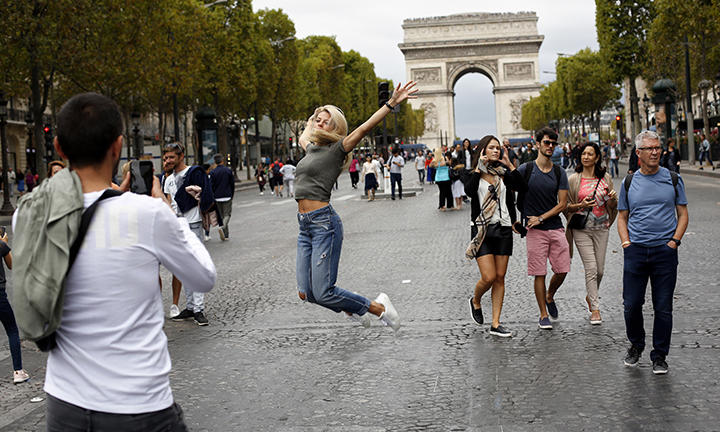
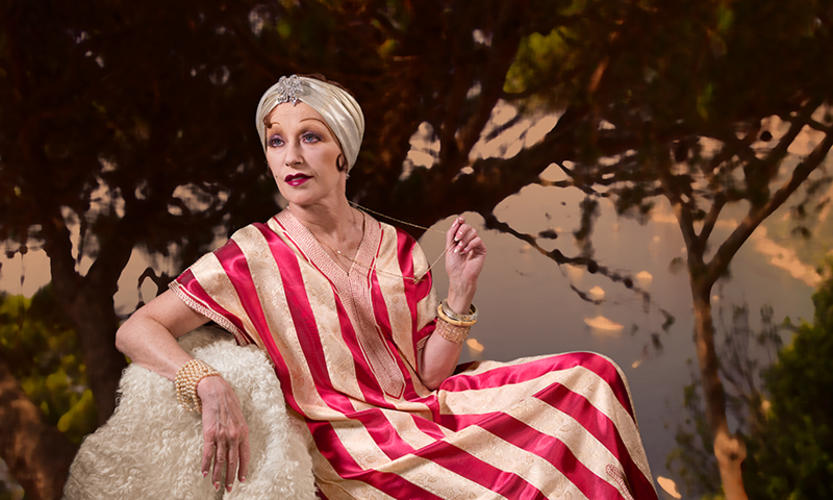


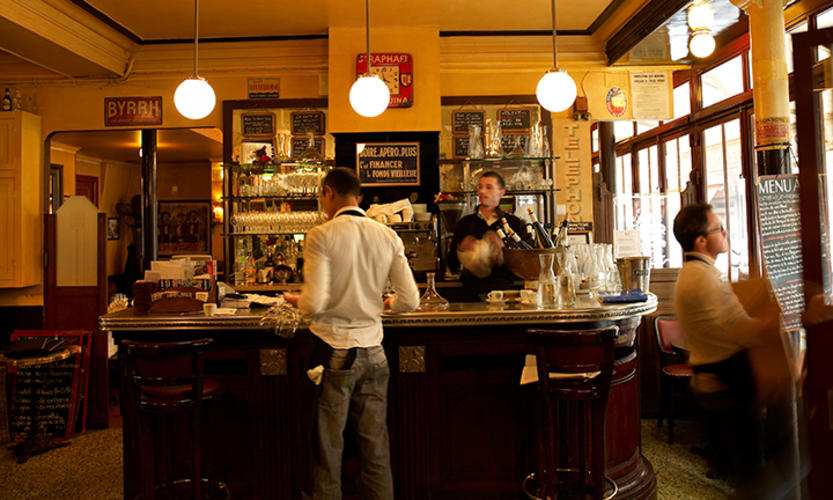
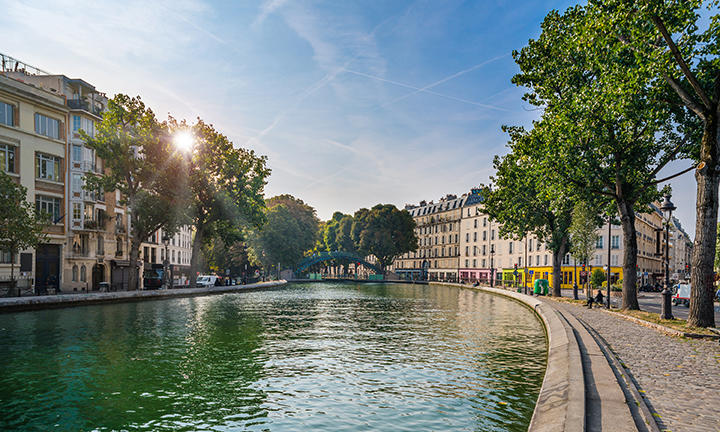
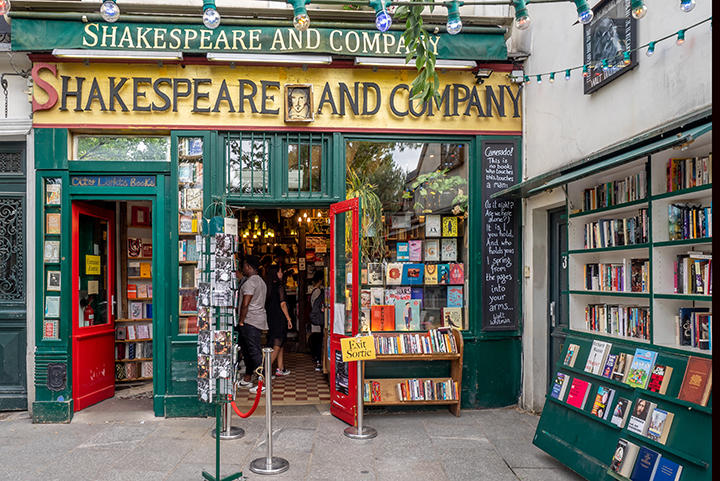
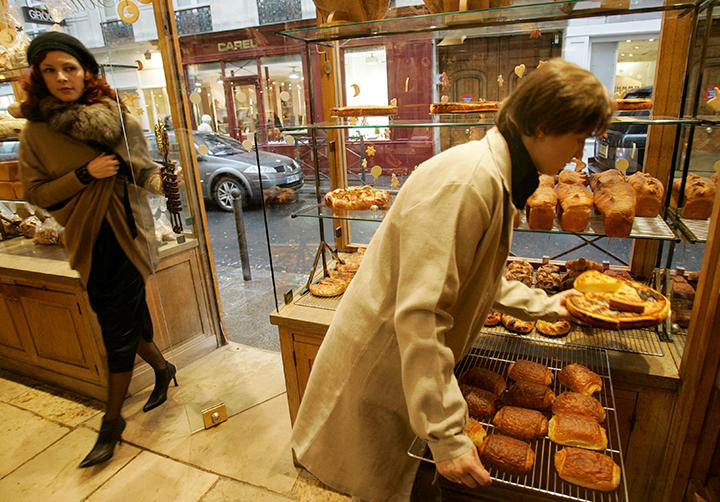




1 Response
Michael Otten ’63
1 Year AgoParis Olympics Were Indeed Great Fun
I managed to get tickets for over nine events, but no luck for any fencing matches, the hottest ticket in town, although the Olympic committee was thinking a few years ago to eliminate fencing from the Olympics.